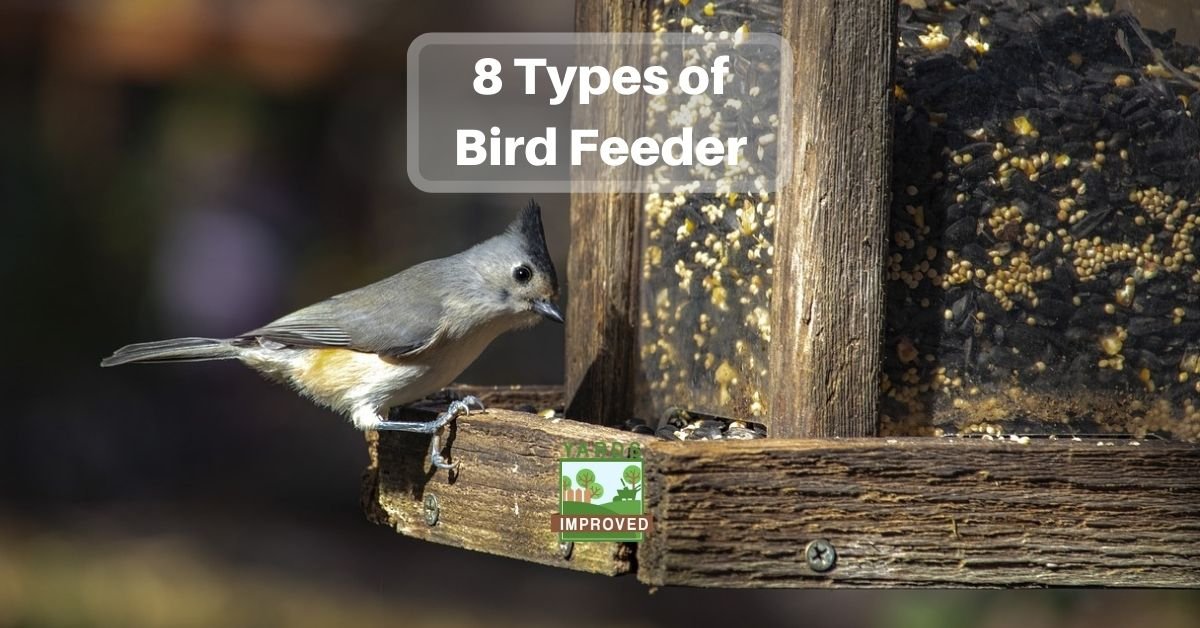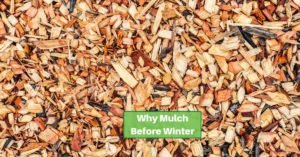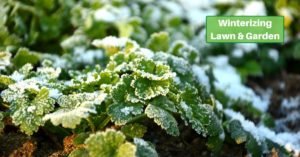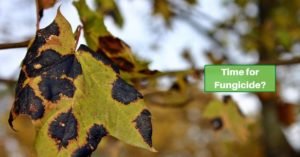Feeding the birds that visit your yard is a great way to keep them healthy. It also keeps them coming back, and that can provide a great experience for the whole family! But did you ever think about the different foods that various types of birds eat? How about the position in which they prefer to eat?
Yes, birds have different diets. Different species also eat in different positions. Some prefer to eat off the ground, while others are accustomed to pulling their food out of a tree. Some prefer to eat from a vertical position. For others, though, they like to land and eat off a horizontal platform.
Adding a bird feeder (or several) to your yard is a great way to get the birds to stop by. And there are so many designs. But those aren’t just to look good – they actually cater to different species. So let’s look at some basic types of bird feeders, the type of bird that enjoys them, and the foods they usually hold.
Tube Feeder
A tube feeder simulates the trunk of a tree. It’s great for birds that like to cling to the trunk or nearby branches and pull their food off.
The tube is long and hollow with small holes for the birds to pull the food through. Most often, it’s filled with seeds. You can get tube feeders with different-sized holes, depending on the type of food you plan to fill it with. Obviously, you want something that the birds will be able to pull the seeds through!
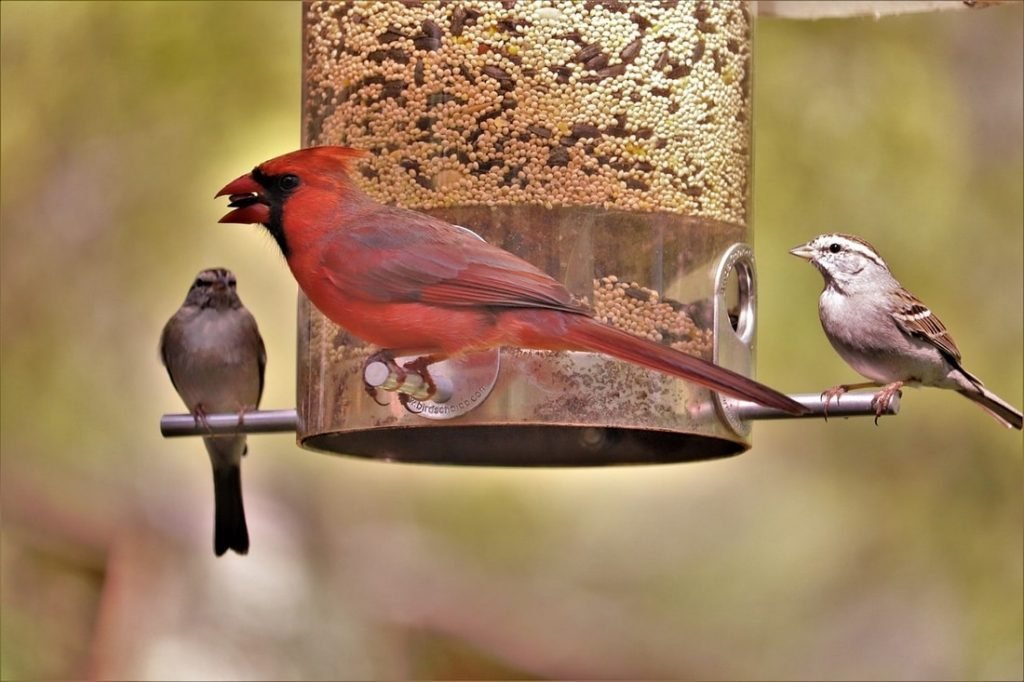
Some birds will cling to the tube itself. Others will land on small perches that stick out from the tube.
If you choose a small tube feeder with small perches, you’ll attract small birds like chickadees, titmice, and sparrows. But if you go for bigger perches, blue jays and grackles will stop by since they can more easily land.
Nyjer Feeder
Nyjer feeders are similar to tube feeders but have a much finer hole. Nyjer, or thistle, is a favorite of the goldfinch.
Since the small, black thistle is so fine, the holes on a nyjer feeder have to be tiny to keep it from slipping out. But the birds will love being able to pull out this special treat!
As much as squirrels can be an annoyance with most bird feeders, they haven’t developed much of a taste for this food. So you won’t usually have to worry about them attacking this one!
Learn how you can keep squirrels away from your bird feeders!
Hopper Feeder
With a typical hopper feeder, you fill it in a receptacle in the middle and the seed slides out under the sides. That is, it’s enclosed on four sides, but not all the sides go all the way to the base. The weight of the seed continues to push it down as more is eaten.
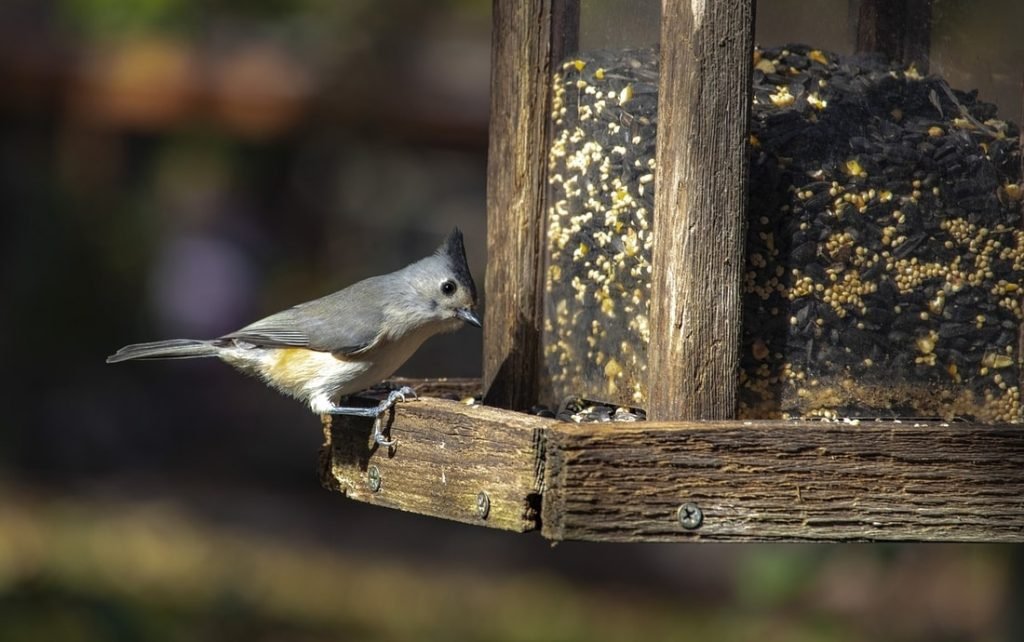
Hopper feeders are often designed to look like houses, barns, or the like. They can be made of wood or metal. Some even have plexiglass sides so you can easily see how much seed is left.
There’s a small ledge on the base where the birds perch and eat from. Birds of all sizes are attracted to these. However, once the larger birds find it, they’ll tend to crowd out smaller ones.
Ground Feeder
Some birds prefer to eat on or close to the ground. But you might not want to toss seed directly on the grass because you’ll end up growing new plants.
A small table-shaped surface can be great for larger birds and small ones alike. Juncos and mourning doves may find it attractive. A lip around the edges will help keep most of the seed from spilling over, and short legs will keep it a few inches above the ground. That’s ideal for birdwatching, too!
Check out some great binoculars for birdwatching while you’re here!
Platform Feeder
A platform feeder is almost identical to a ground feeder – except instead of standing on legs, it’s suspended from above by string or chains!
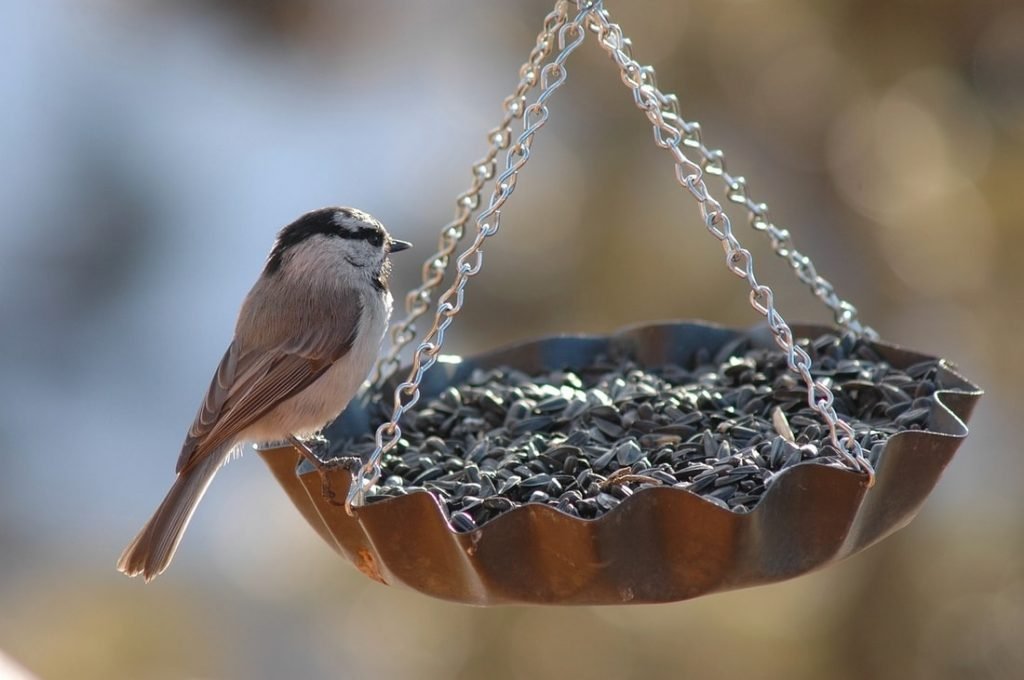
It provides that same large, flat surface that allows birds of all sizes to land. You can hang it from a tree branch or an overhang. The seed is never too deep, so you don’t have to worry about it going to waste, either.
Suet Feeder
Suet is animal fat. In particular, it’s the hard fat from the loins and kidneys of cows and sheep. And it’s a definite favorite of many birds!
You can buy processed suet at most places that sell birdseed. Sometimes, it’s even available with seed or berries mixed in.
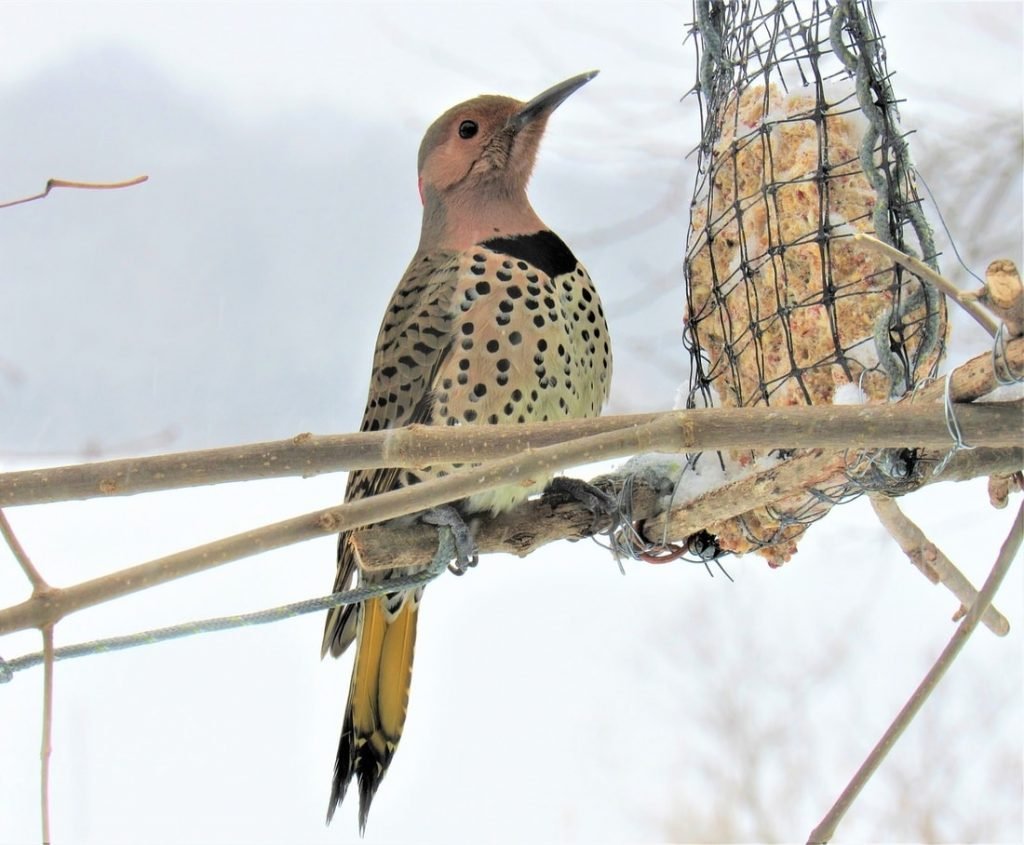
A suet feeder is usually shaped like a narrow cage, and the suet is usually cut in pieces the size of sliced bread. The feeder hangs from a branch or pole.
Woodpeckers love this treat as do any birds that eat insects. It’s basically an alternative source of protein for them.
Peanut Feeder
Some birds go nuts for peanuts! (Yes, we know peanuts are legumes, not nuts!) A peanut feeder is designed with larger netting that will hold peanuts in while letting a bird peck at them and pull out smaller pieces.
Peanut feeders can come in just about any shape or size, from tube feeders to wheels.
Bluebirds, finches, and woodpeckers love this food.
Nectar Feeder
Hummingbirds are in a class by themselves in many ways. It’s a special treat to see them. And their eating habits are pretty awesome since they usually don’t even land to eat!
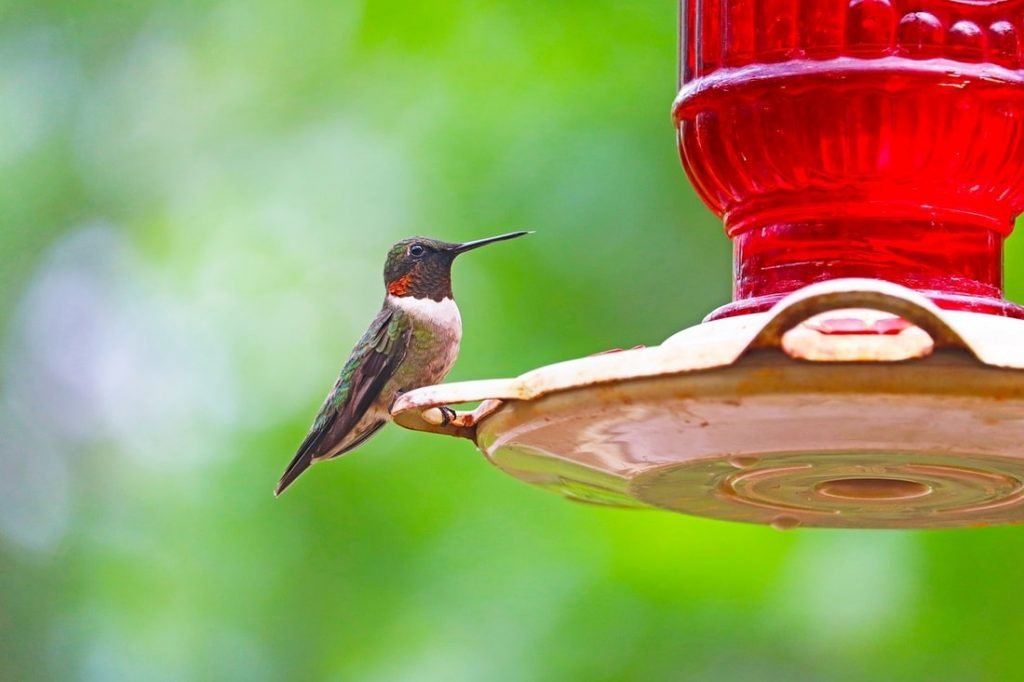
Be sure to check out our article devoted to nectar feeders and how to attract hummingbirds to your yard for more information.
Now that you know more, hop over and check out some of the best of each type of bird feeder!
How About A Birdbath?
Now that you’ve fed the birds, how about giving them a place to drink and bathe? Hop on over to our article about birdbaths to get tips on choosing one for your yard!
Conclusion
So many birds, and so many diets! If you want to give the birds a helping hand as well as enjoy their presence in your yard, be sure to choose the right type of feeder. There are so many options and a variety of feeder types can help make your yard a great place to enjoy our feathered friends.

